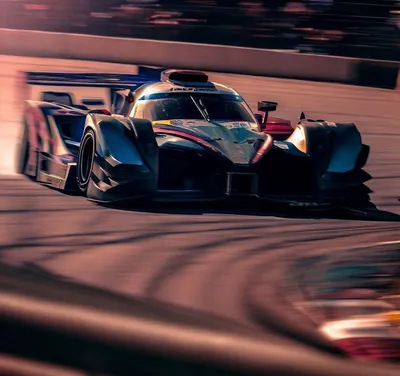Anti-Roll / Sway Bars – Overview

If you are a sim racer, you know how important it is to have a well-tuned car that can handle any track and any condition. One of the most crucial components of your car setup is the anti-roll bar, also known as the sway bar or stabilizer bar. The anti roll bar is a metal rod that connects the left and right wheels of your car, and helps to reduce the body roll and improve the cornering stability. But how do you adjust your anti roll bars to suit your driving style and preferences? How do you know if you need more or less stiffness, or if you should balance the front and rear bars differently? In this ultimate guide, we will answer all these questions and more. We will explain the physics behind anti roll bars, how they affect your car’s behavior, and how to fine-tune them for optimal performance. Whether you are a beginner or a pro, this guide will help you master anti roll bars in sim racing and take your skills to the next level.
Let’s understand the physics
When a car turns, the centrifugal force pushes it to the outside of the curve. This causes the car to lean or roll to one side, which compresses the suspension of the outer wheel and extends the suspension of the inner wheel. This affects the contact patch of the tires, which is the area where the rubber meets the road. The more contact patch a tire has, the more grip it can generate. Anti Roll Bars (ARBs) try to counter this force. They can be used in conjunction with spring rates and altering the damper settings, too
Anti roll bars counteract this effect by transferring some of the force from the outer wheel to the inner wheel. They do this by twisting along their length, creating a torsional spring effect. This reduces the difference in suspension compression between the two wheels, which levels out the car and increases the contact patch of both tires.
What are the benefits of anti-roll bars?
The main benefit of anti-roll bars is that they improve the handling and cornering performance of a race car. By reducing body roll, they allow the car to maintain a more balanced and stable posture, which enhances its aerodynamics and increases the downforce. They also improve the steering response and feedback, which gives the driver more confidence and control during the sim racing session.
Another benefit of anti roll bars is that they can be adjusted to fine-tune the handling characteristics of a race car. By changing the stiffness or diameter of the anti roll bars, or by disconnecting them altogether, a driver can alter the balance between understeer and oversteer. Understeer is when a car turns less than desired, while oversteer is when a car turns more than desired. A driver can choose to have more or less understeer or oversteer depending on their driving style and preference.
What are the drawbacks of anti-roll bars?
The main drawback of anti-roll bars is that they compromise the ride quality and comfort of a race car. By stiffening up the suspension, they reduce its ability to absorb bumps and irregularities on the road surface. This usually is not a problem for most race circuits, but it is something to bear in mind for ones with excessive bumps. Although sim racing titles have more accurate laser scan data nowadays, so tuning the Anti Roll Bars (ARBs) will become more of a fine art on some surfaces.
Another drawback of anti roll bars is that they can reduce traction on uneven terrain or surfaces. By linking both wheels on an axle, they limit their independent movement and articulation. This can cause one wheel to lose contact with the ground if it encounters a bump or a dip that is not matched by the other wheel. This can reduce grip and stability, this is especially probable during tight hairpin type corners and running excessive caster angles. The rear inside can have a tendency to want to raise up.
How to choose anti-roll bars for your race car?
There is no definitive answer to what kind of anti roll bars are best for your race car. It depends on many factors, such as your vehicle type, weight distribution. The suspension setup, tire choice, driving style, and personal preference also play a part. However, there are some general guidelines to help you decide. For example, if you want to reduce body roll and improve cornering performance, you should use stiffer anti roll bars. Conversely, if you want to increase traction and comfort on bumpy or uneven surfaces, you should use softer anti roll bars. If you want to adjust the balance between understeer and oversteer, you should alter stiffness for front and rear. If you want to have more flexibility and versatility in your handling setup, you should use adjustable or disconnectable anti-roll bars.
ANTI ROLL BAR EFFECT ON RACE CAR – SUMMARY

Hard front anti roll bar
- Increasing the front roll stiffness and reducing the front grip, which can cause understeer or push.
- Reducing the load transfer from the inside to the outside wheel, which can improve traction and cornering speed.
- Balancing the handling characteristics of the car by matching the front and rear roll stiffness ratios.
- Increasing the responsiveness and stability of the car by reducing body roll and improving steering feel.
- In high speed corners, where the car is generating a lot of lateral force, a hard anti-roll bar on the front can reduce understeer and improve cornering speed. This can be attributed to maintaining a solid front aero platform. However, too stiff and it will begin to feel pushy again.
- This can also improve the aerodynamic performance of the car by reducing the pitch angle and keeping the front splitter closer to the ground.
- In low speed corners, where the car is generating less lateral force, a hard anti-roll bar on the front can increase understeer
- A hard anti-roll bar on the front can make the front tires lose grip. This is caused by transferring too much weight to the outside wheel and reducing the load on the inside wheel.
- This can also reduce the traction of the car by making it harder to accelerate out of the corner. The inside wheel can spin more easily in such scenarios.
Soft front anti roll bar
- A soft front ARB reduces the lateral load transfer from the inside to the outside front wheel
- This means that both front wheels have more grip and can steer better
- A soft front ARB also reduces the load transfer from the front to the rear axle
- This means that the rear wheels have less grip and can slide more easily, which helps to rotate the car
- A soft front ARB allows more body roll than a stiff ARB, which affects the geometry and balance of the car
- A high body roll can reduce the camber and contact patch of the tyres, which reduces grip
- A high body roll can also shift the weight and CoG of the car, which affects stability and responsiveness
- A soft front ARB can also make the car more prone to snap oversteer. This is usually on corner entry when the rear wheels suddenly lose grip and spin out. Note, running too soft dampers on the front can also cause this.
Hard rear anti roll bar
- A hard rear ARB reduces the rear grip and makes the rear end more prone to slide out. This can be desirable for some drivers who prefer a loose handling car. However, it can also be dangerous and unpredictable if not controlled properly. In addition to this, it can also increase tyre wear.
- Reduce body roll: A hard ARB reduces the amount of body roll or lean that occurs when cornering at high speeds. This can improve aerodynamic efficiency and stability, as well as reduce weight transfer and load variation on the tires. This is useful when trying to make use of the rear diffuser and rear wing. The flatter the aero platform, the better.
- It can also add stability in slower corners in off throttle situations. It will prevent the rear from wanting to “wander around” the nose as it is pointed in. Anyone who has driven the McLaren 720s GT3 Evo in Assetto Corsa Competizione will understand this point!
Soft rear anti roll bar
- The car becomes more understeery and less oversteery.
- The available grip at the back is increased while decreasing it at the front.
- This can aid stability when getting on power while the car is still in yaw out of a corner.





